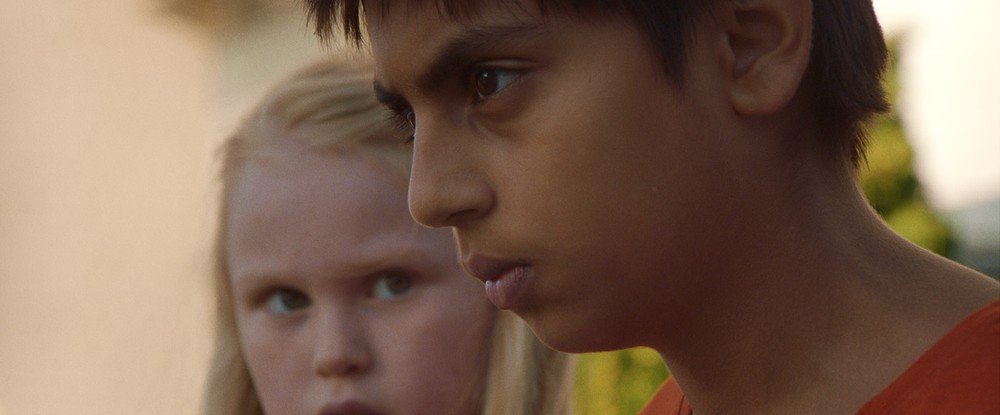CRIMES OF THE FUTURE
Directing: C+
Acting: B
Writing: C-
Cinematography: B
Editing: B-
Special Effects: C
I don’t think David Cronenberg has a plausible grasp on what evolution really is. In his mind, it’s connected to the idea that a little boy could wind up with the ability to digest plastic, and so he treats us with an opening sequence in which said boy is literally eating a plastic wastebasket.
I have a very simple understanding of evolution, but even I know that it’s not an active process, but a passive one: it’s about elimination, the disappearance of traits that are no longer useful, thereby allowing the surviving useful traits to flourish. In the world of Cronenberg’s Crimes of the Future, from a script he first wrote in the nineties and which still feels like it’s from that era, human bodies have begun randomly generating new organs with no known function. They have also stopped getting infections (one character marvels at how no one ever washes their hands anymore, blech), and people’s pain tolerance has skyrocketed, resulting in a trend of sort of sensual body mutilation just to get to the point of feeling something. And from an evolutionary perspective—ostensibly the perspective this film takes—absolutely none of that makes any sense whatsoever.
Science fiction works best when you can easily draw a logical line from what is known currently to the future being depicted—that is, when it has a sound scientific starting point. This was why Stanley Kubrick’s 1968 film 2001: A Space Odyssey still wows audiences, and even why Ridley Scott’s Blade Runner still impresses. These depictions of a then-far future have anchors in the real worlds in which they were created. Crimes of the Future does not. Instead, it’s far more concerned with “body horror” wrapped in a cocoon of pretensions, the kind with which self-serious “art film aficionados” might have a heyday.
In terms of credit, I’ll give Cronenberg this much: he knows how to establish and maintain tone. Granted, his score composer on this film, Howard Shore, is doing much of the heavy lifting for him on this front. It’s only due to his synth-heavy, “haunting” score that an otherwise innocuous shot of a little boy milling about the beach is telegraphed as ominous. And not for nothing, but that score has its own echoes of Vangelis’s far superior score for Blade Runner.
Furthermore, Cronenberg is on record as having an incredibly hands-off approach to directing his actors, and it shows. He must have given them all one consistent note, though: everybody speak in halting, hushed tones! His “future” here is curiously unpopulated, the rare exterior shots depicting derelict, graffiti-riddled buildings on mostly empty streets. Yet, at the performance art events put on by the lead characters, Saul (Viggo Mortensen) and Caprice (Léa Seydoux), in which Caprice uses a repurposed old autopsy machine to extract his useless organs for a live audience, the audiences tend to be packed, all of them holding up recording devices of varying design (curiously, all of them a bit bulkier than one might imagine). But never noisy—they stand in rapt, silent attention.
There’s one exchange of dialogue I particularly liked. Saul says: “She said sex is surgery.” Caprice corrects him: “She said surgery is the new sex.” The latter is the basic premise of this film, but I’m much more interested in the implications of the former as an idea. I want someone to flesh out a sensual film from that idea. Maybe not David Cronenberg.
Trying and failing to find something of lasting interest in there.
Overall: C+










